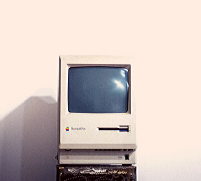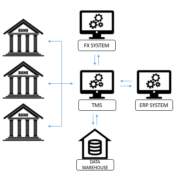Why You Don’t Need a Treasury Workstation
| 11-11-2019 | treasuryXL | BELLIN
Location dependence vs. universal collaboration and access
Often times, terms and definitions change over time; and sometimes terms remain the same but their meaning shifts. Take for example the word “bookkeeping:” accountants nowadays no longer put pen to paper and make manual entries in a book. Transferring this concept to treasury, we only need to look at the name of the department itself. Treasurers no longer watch over dungeons filled with treasure troves and other valuables (maybe with the exception of Fort Knox). But that’s not the only shift in meaning: we can also come across obsolete terms and definitions when it comes to the digitalization of treasury tasks and specifically with the term: treasury workstation.
Looking at search requests in Google, one of the most commonly searched terms in treasury is “treasury workstation” – a term that has been in use for treasury systems for many years. However, we need to ask ourselves if the term and the understanding of technology and processes associated with it are still appropriate today. Should they have long been replaced by other terms?
“Treasury Workstation” – is that what treasury is?
“Treasury workstation” contains the element of “station” that appears to have no place in today’s treasury world: mobile communication and the flexible use of systems are such obvious characteristics of our daily work that a “station” clearly no longer delivers. A workstation is literally stationary and therefore limited: it sits in one single place and is only available right there. Conversely, this is precisely where modern systems differ: they’re web-based and can be used from any mobile device without any limitations regarding security, user-friendliness, and functionality. Indeed, the very fact that modern systems are not stationary makes them so powerful. They’re mobile and any number of people can make use of them from anywhere.
Today, large departments and units need to be able to readily collaborate and exchange knowledge and data; a workstation seems inappropriate to meet these demands and stands for a status quo that IT has long left behind. No one wants to install software on a workstation anymore; no one wants to be tied to a desktop computer. The internet with all its enormous potential drives the optimization of business processes and data communication to the point where companies can no longer afford to back workstations, in particular in treasury.
Collaboration with a Treasury Management System
At BELLIN, their system, tm5, is not a physical workstation limited to a specific location. The system is a web-based and dynamically-integrated platform that excels in ensuring global visibility, maximized security and uncapped work-hours saved. The key ingredient in regard to this article is that the system is web-based, yet accessibly by anyone company wide. We call this our Load Balanced Treasury approach which means no per-user licenses, ensuring subsidiaries can share data seamlessly, profit from real-time transparency, and maximize global security.
While many treasurers still refer to modern platforms as workstations, the distinction is important. Modern, web-based systems are platforms for collaboration, for cooperation and for uniting internal and external parties and partners who all contribute to treasurers always having the information they need to do their job: make decisions that reduce business risk, optimize asset management, manage funding and hedging and give the company the overall stability to meet the company objectives.
This is by no means limited to treasury. Unlike a workstation that is only ever available to the people in one particular office, treasury management systems serve the entire company and people from any department can be involved where needed. This allows treasurers to share the workload, get information first hand and have a fully integrated and connected workflow that ultimately benefits everyone.
Conclusion
Treasury workstations are a thing of the past and platforms like the BELLIN tm5 have long become established as industry standards. Consequently, it is time we reflect that fact in our terminology in order to find what businesses really need and stop searching for things that were modern years ago. “Station” ultimately suggests inflexibility, stagnation. As time goes by, both terminology and processes are subject to change and move forward – just as treasury does. Perhaps this is just a semantic error or term that has stuck over the years? Either way, as treasury enthusiasts and experts, we are keen to help the industry acclimate to the existing technological ecosystem.
Martin Bellin
CEO











